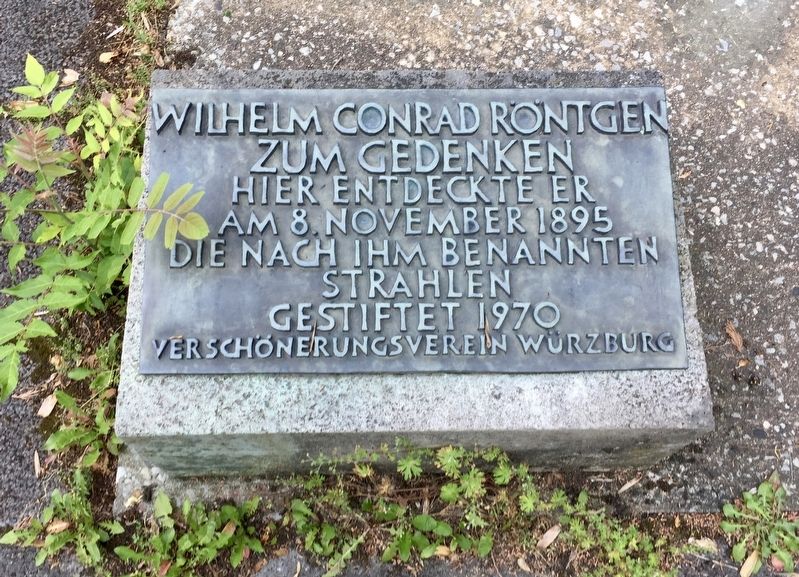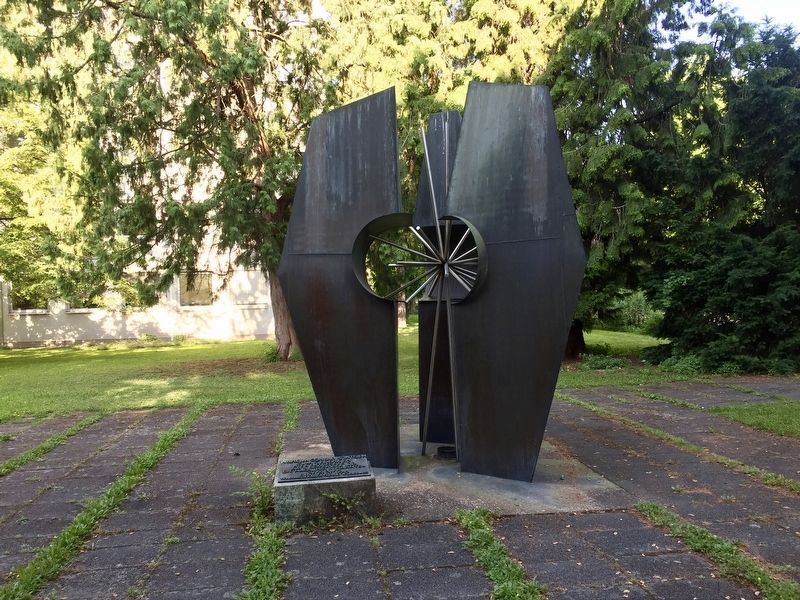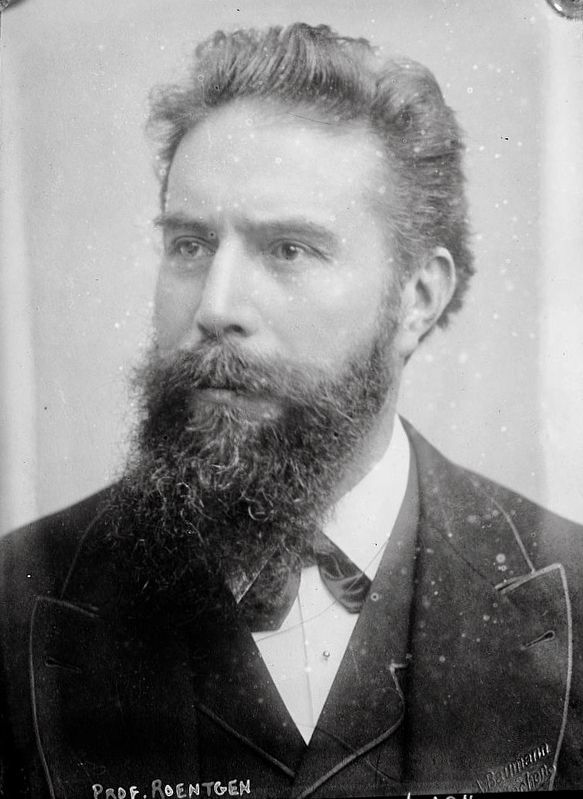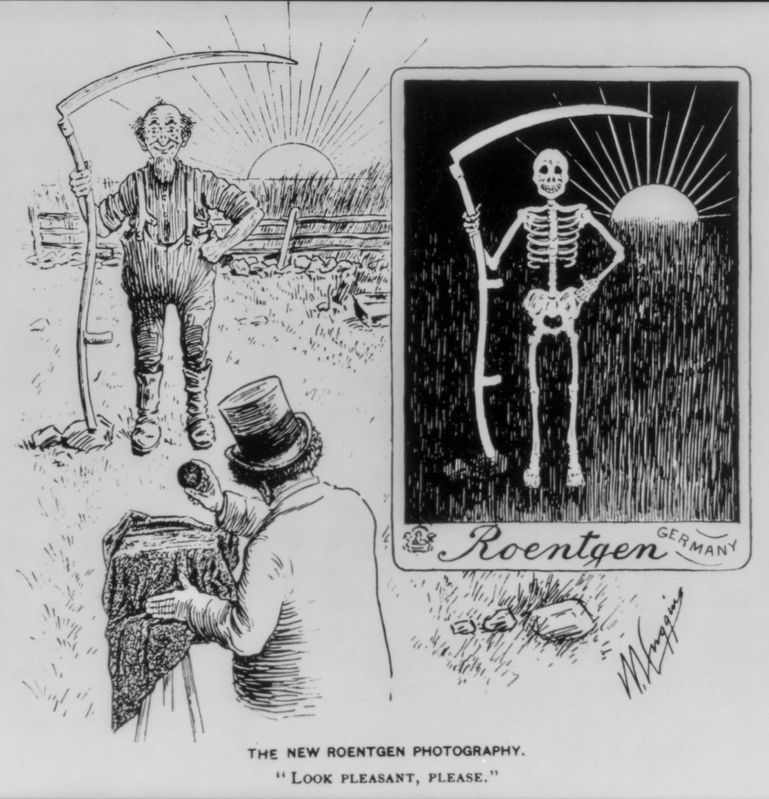Wilhelm Röntgen
Discovery of X-Rays
zum Gedenken
Hier entdeckte er
am 8. November 1895
die nach ihm benannten
Strahlen
Gestiftet 1970
Verschönerungsverein Würzburg
In commemoration of Wilhelm Conrad Roentgen, who here on November 8, 1895, discovered the rays named after him (i.e., Roentgen- or X-Rays).
Erected 1970 by Verschönerungsverein Würzburg.
Topics. This historical marker is listed in this topic list: Science & Medicine. A significant historical date for this entry is November 8, 1895.
Location. 49° 48.016′ N, 9° 55.931′ E. Marker is in Würzburg, Bayern (Bavaria). Marker is at the intersection of Röntgen and Klinikstrasse, on the right when traveling east on Röntgen. Touch for map. Marker is in this post office area: Würzburg BY 97070, Germany. Touch for directions.
Other nearby markers. At least 8 other markers are within walking distance of this marker. Entdeckungsort der Röntgenstrahlen / Site of the Discovery of X-Rays (about 120 meters away, measured in a direct line); Kohlrausch, Roentgen, and Wien (about 120 meters away); Adolf Eugen Fick (about 150 meters away); Friedrich Wilhelm Scanzoni von Lichtenfels (about 150 meters away); Hermann Müller-Thurgau (about 180 meters
Also see . . . Wilhelm Röntgen (Wikipedia). "Wilhelm Conrad Röntgen (27 March 1845 – 10 February 1923) was a German mechanical engineer and physicist, who, on 8 November 1895, produced and detected electromagnetic radiation in a wavelength range known as X-rays or Röntgen rays, an achievement that earned him the first Nobel Prize in Physics in 1901. In honour of his accomplishments, in 2004 the International Union of Pure and Applied Chemistry (IUPAC) named element 111, roentgenium, a radioactive element with multiple unstable isotopes, after him." (Submitted on June 8, 2018.)
Additional keywords. Nobel physics Gedenktafel
Credits. This page was last revised on January 28, 2022. It was originally submitted on June 8, 2018, by Andrew Ruppenstein of Lamorinda, California. This page has been viewed 222 times since then and 9 times this year. Photos: 1, 2, 3, 4. submitted on June 8, 2018, by Andrew Ruppenstein of Lamorinda, California.



